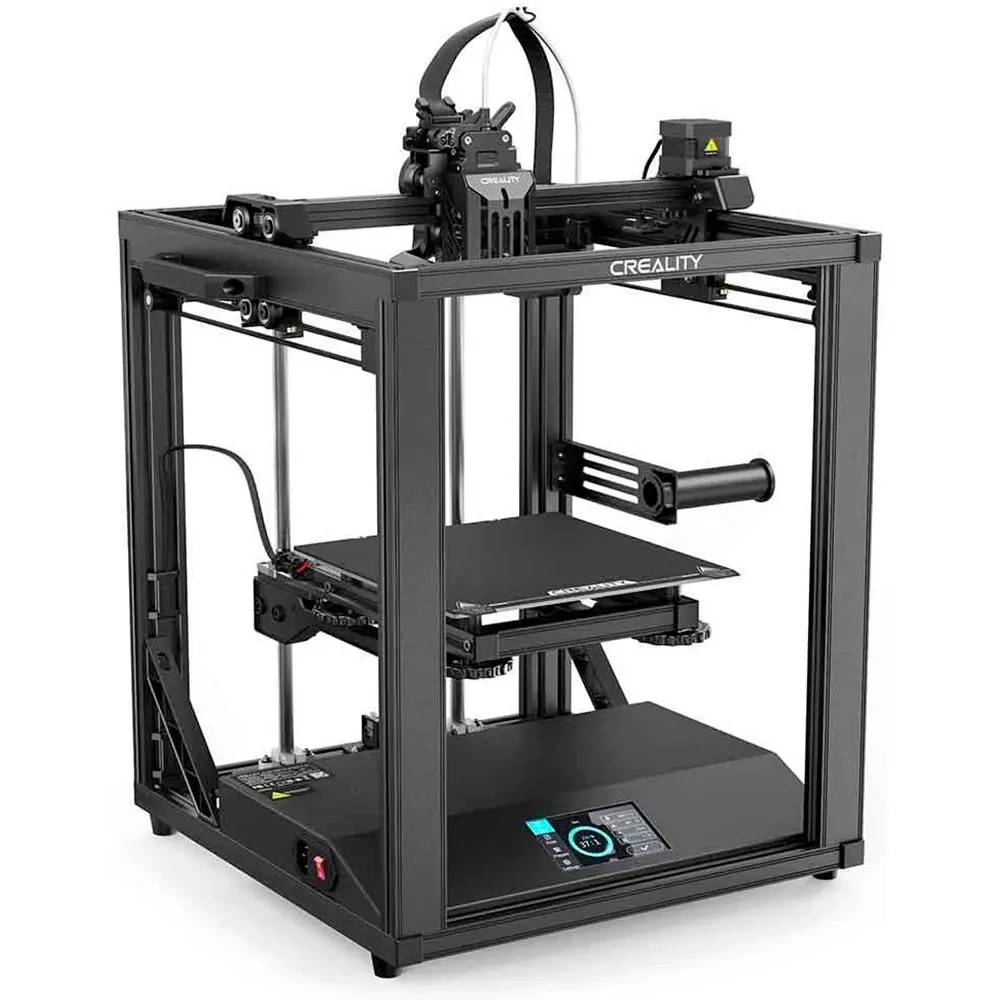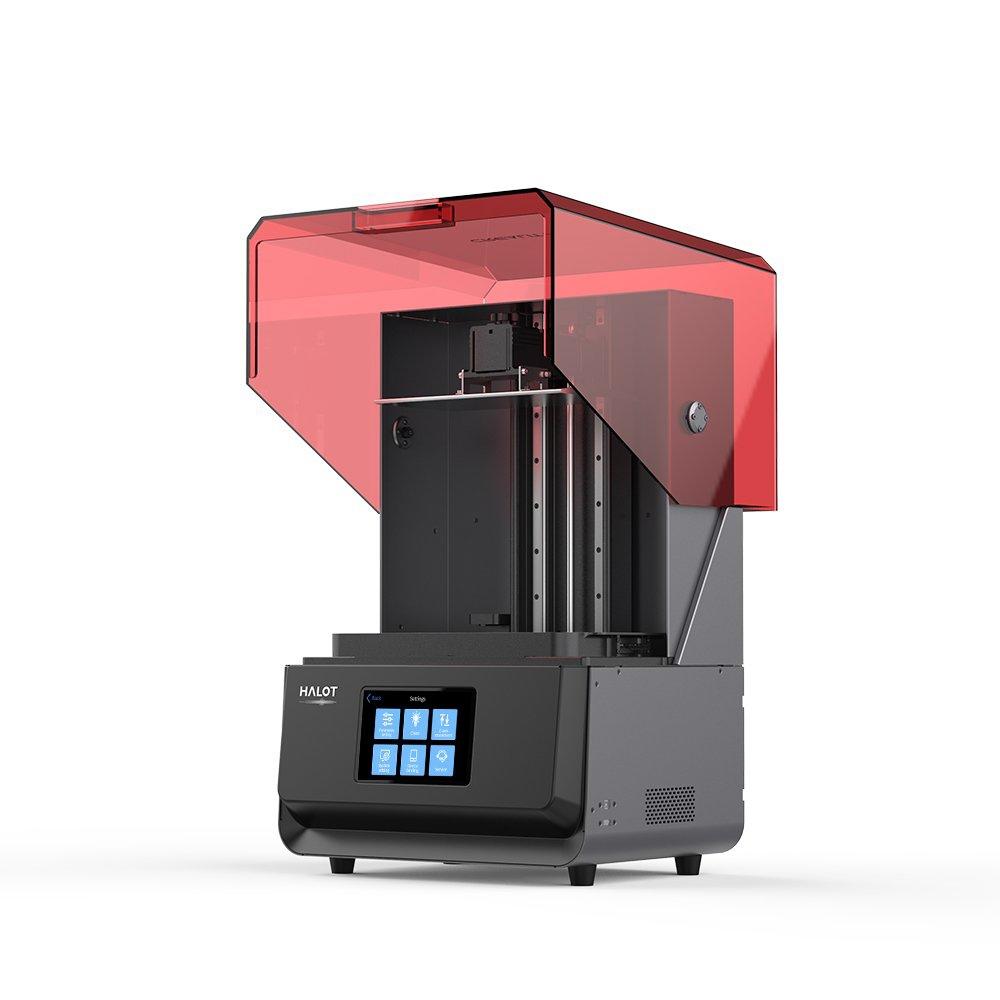Compare Ender 5 S1 vs Halot Max
Comparison between the best 3D printers
Choose the best 3D printer at the best price. The cheapest 3D printers are here.
Buy a 3D printer here with 3D Fila.
 |
 |
|
| Model | Ender 5 S1 |
Halot Max[BUY Halot Max] |
| Printing Material | Filament | Resin |
| Buy Filament for Creality 3D Ender 5 S1 | Buy Resin forCreality 3D Halot Max | |
| Estimated price | $467,00 | $3000,00 |
| Manufacturer | Creality 3D | Creality 3D |
| Release Year | 2022 | 2021 |
| Print Volume [mm] | 220x220x280 | 293x165x300 |
| Printer Size [mm] | 425x460x570 | 480x387x770 |
| Weight [kg] | 12,1 | 32,5 |
| Power Loss Recovery | YES | NO |
| Maximum Resolution [mm] | 0,05 | 0,03 |
| Processor | 32 Bits | |
| Display | Display touchscreen 4,3 '' | Display touchscreen 5'' |
| Power Supply | 350 W | |
| Connectivity | SD / USB / Wi-Fi | SD / USB / Wi-Fi |
| Operating systems | Windows, Mac, Linux | Windows, Mac, Linux |
| Date of registration in the system | 2023-10-04 | 2022-11-04 |
| Release date | 2022 | 2021 |
| Extra features | A steel drive shaft synchronizes the two Y-axis belts. High-torque 42-48 Y-axis motor for responsive and precise movement. Cartesian structure. Enhanced stability by thick linear shafts, extra stiffeners, two cantilevers, and silicone bumpers. Double Die Spring profile reinforcement. Silicone bed support. All-metal Sprite direct extruder. Best for printing with flexible filaments like TPU. Auto-calibration with 16-point CR Touch. Compatible with Sonic Pad, Wifi Box, and Camera kit. | The Halot Max printer stands out for its large print size (293 x 165 x 300 mm) and uses SLA technology. It has an integral light source for improved accuracy and a strong core with an advanced operating system. Its Z-axis module ensures high precision, supported by efficient slicing software. The machine offers online OTA updates and boasts an adjustable layer thickness between 10 and 200 microns. Its XY-axis resolution is 3840*2160, with 0.05 mm accuracy, and an integral 405nm light source. The printer includes a 5" touchscreen and multiple connectivity options, such as USB, Creality Cloud, and HALOT BOX WiFi. With cutting-edge technology, the Halot Max is ideal for printing small models with uniform precision, thanks to its self-developed lighting system and stable printing mechanism, which includes dual linear guides, ball screws, and an intelligent brake system. |
| Support for multiple colors and materials (AMS and CFS) | NO | NO |
Notes * |
||
| Cost-benefit | 7 / 10 | 5 / 10 |
| Hardware | 2.4 / 10 | 1 / 10 |
| Tela | . | . |
| Print volume | 3 / 10 | 3 / 10 |
| Performance | 2 / 10 | 9 / 10 |
| [BUY Halot Max] |
Conclusion |
| In comparing the Ender 5 S1 and the Halot Max 3D printers, several key aspects come into play, reflecting both performance capabilities and cost-effectiveness. The Ender 5 S1, with its robust features such as power loss recovery, high torque motor, and versatile material compatibility, represents a solid choice for users looking for a reliable Cartesian printer that excels in flexible filament printing. Its construction supports enhanced stability, and the printer's compact size makes it suitable for various environments. Furthermore, with a favorable cost-benefit ratio and decent performance, it caters well to both beginners and veterans in the 3D printing community. On the other hand, the Halot Max significantly outperforms the Ender 5 S1 in print resolution and precision, making it the better option for detailed prints, particularly for small models. Its advanced SLA technology, combined with a sophisticated operating system, allows for high-quality output and fine adjustments in layer thickness. However, its higher price point may limit accessibility for some users, and the lack of power loss recovery is a notable drawback. In summary, the decision between the Ender 5 S1 and the Halot Max boils down to the user's specific needs and budget. For those prioritizing cost and varied material handling, the Ender 5 S1 is a commendable choice. Conversely, for professionals seeking high-resolution prints and have the budget to support it, the Halot Max offers cutting-edge technology and precision, although it comes at a premium. Ultimately, each printer holds distinct advantages, catering to different segments of the 3D printing market. |

